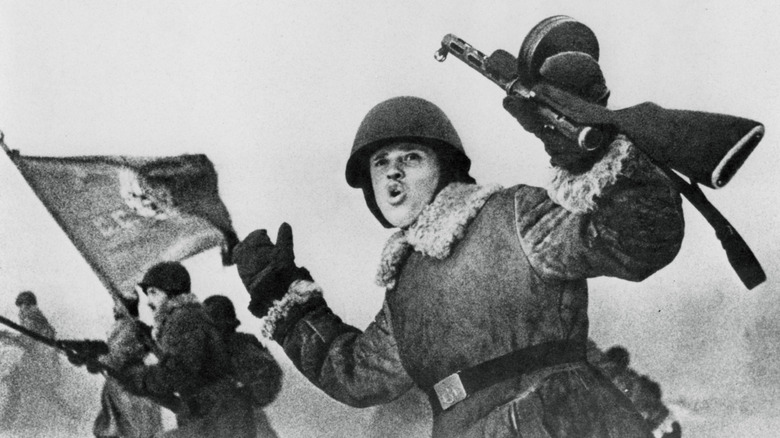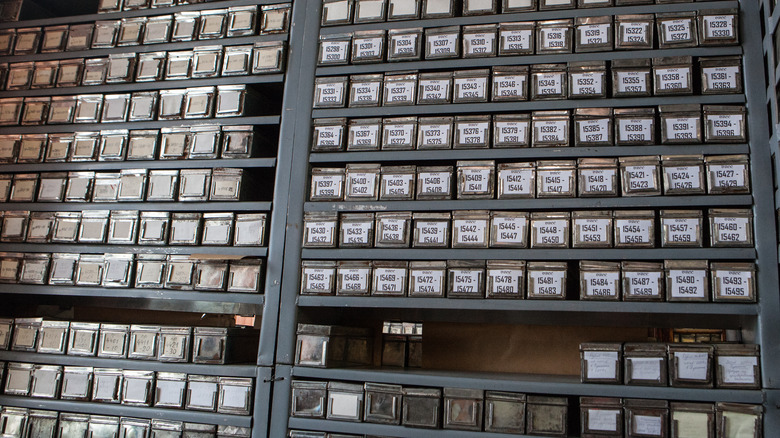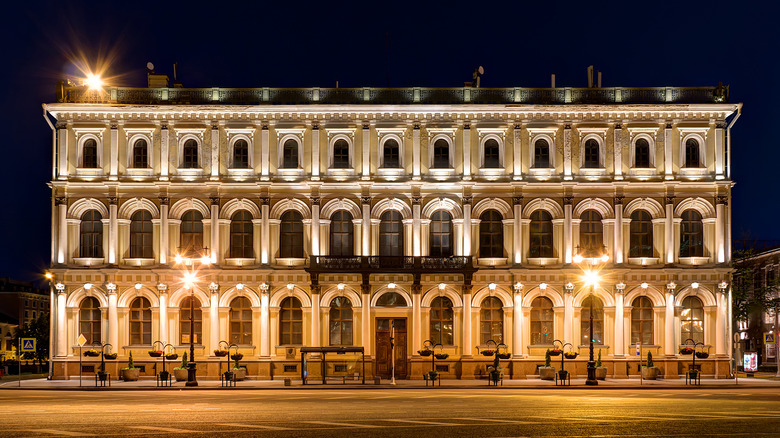The Battle Of Leningrad's Unexpected Heroes Were Scientists Who Starved Themselves To Death
In the summer of 1941, Nazi Germany invaded the Soviet Union. Within two months, Hitler's forces had reached Leningrad (now St. Petersburg), a city northwest of Moscow near the Baltic Sea. When the Russians finally managed to slow the German advance in the suburbs of the city, digging in for trench warfare, Hitler ordered a siege. The Nazis nearly surrounded the city and began constant artillery bombardment and bombing raids. According to History, they intended to starve Leningrad into submission.
And starve the Soviet people did. Little food had been stockpiled as the Germans advanced across the country, and the shelling destroyed much of what did exist. There was a trickle of supplies that could make it in across Lake Ladoga, but Leningrad was a city of three million. Residents were rationed to a few slices of bread per day. Eventually, they ate rats, pets, and even each other. During winter, 100,000 people starved to death per month. In total, nearly 1 million died from the famine, bombings, and elements.
But in the midst of this misery, there was a small group of Russians who, in one of the most incredible stories of World War II, actually chose to starve to death. They had plenty of food.
The Seed Vault and Its Guardians
Researchers at the Vavilov Institute of Plant Industry in Leningrad were in charge of preserving 40,000 different types of food in a massive seed bank. With the long-term future of science, Earth's biodiversity, and Russia in mind, the scientists refused to eat their potatoes, corn, rice, wheat, beans, and peas during the siege (via The Washington Post). Many of them starved to death.
Like the rest of the city, the scientists had to fight off the extreme cold alongside their hunger pangs, burning everything they could to keep warm. But they had special concerns during this 900-day tribulation. They also had to make fires to prevent seeds and crops, such as potatoes, from freezing to death. The researchers had to protect the stores from hungry rats and Russians alike, laying out rat poison everywhere and barricading the entrances to the institute, and also established a 24-hour watch. Further, precautions were made to safeguard the seeds from themselves, with certain areas always having two guards instead of one. All this while bombs exploded across the city day and night.
Portraits of Heroes
The researchers' commitment to their task did not end there, however. Even more remarkably, while the Soviet government was getting meager rations into Leningrad across Lake Ladoga, institute employees made plans to smuggle food out of the city! More than once, they got seed samples across the lake to storage centers in the Ural Mountains, according to The Washington Post.
By the time the Red Army broke the German siege, 28 Vavilov Institute workers had died of hunger (via Phys.org). But the seeds and the institute survived. The Washington Post reported that the facility was fortunately located near the German consulate and a hotel where Hitler was keen on hosting a victory party one day. The area was spared intense shelling. The survivors — and later scientists — continued the institute's work after the war. Though it was under threat in 2010, with real estate developers fighting to demolish it and build new housing (via HuffPost), the Vavilov Institute again survived and still protects the world's crops today. The 28 portraits of its heroes hang in its corridor.


